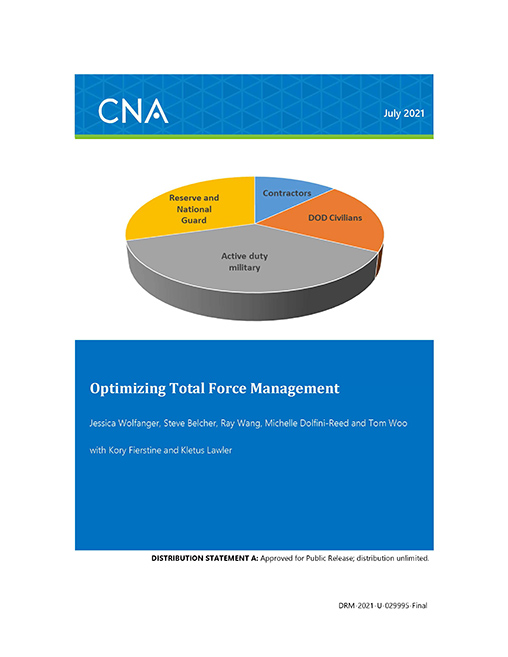The Department of Defense’s (DOD’s) total force (TF) consists of military (active, reserve, and National Guard), government civilians, and contracted services. Each type’s share of the TF has fluctuated over time, driven by changes in national security concerns and shifting views on what constitutes the most effective and efficient workforce.
Manpower management (MM) is the umbrella term for the set of processes by which DOD agencies and the services define and fund—for each operational unit, command staff, and shore/support organization—the numbers and types of job positions that these activities need to perform their missions. The key MM processes are manpower requirements determination (MRD) and manpower programming and budgeting. Embedded in these processes is the determination of the most appropriate labor type (military, government civilian, or contracted services) to perform the job, referred to in the remainder of this report as the workforce mix or manpower mix determination process.
In 2019, when members of the House Armed Services Committee (HASC) reviewed DOD’s workforce projections for FY 2020 and found larger increases in military requirements compared with civilian requirements, some questioned whether the TF decision-making processes within the services (and to a lesser extent, the Fourth Estate) followed DOD’s policy and guidance when assigning a labor source to each job. This prompted the HASC to call for a review of the processes used by the services and DOD agencies to determine the department’s TF. In response, the Total Force Manpower and Analysis Directorate (TFM&RS) in the Office of the Assistant Secretary of Defense for Manpower & Reserve Affairs asked CNA to (1) investigate how DOD’s policy and guidance are integrated into the MM processes that are currently used to determine the size and composition of the department’s workforce and (2) assess whether this guidance is being used to determine the most appropriate labor source for each position throughout the department.
To address the HASC’s concerns, CNA investigated the MM processes in each of the DOD components to understand how they are conducted, paying particular attention to workforce mix decisions.3 We supplemented that effort by analyzing manpower data across the services looking for indications that one type of manpower may be favored over another—particularly in organizations with a mix of military and civilian personnel. Finally, we identified factors external to the MM process that significantly influence workforce mix decisions and the composition of the total force over time.
Our investigation uncovered four key findings.
Download reportDISTRIBUTION STATEMENT A: Approved for Public Release; distribution unlimited.
Details
- Pages: 116
- Document Number: DRM-2021-U-029995-Final
- Publication Date: 7/7/2021
